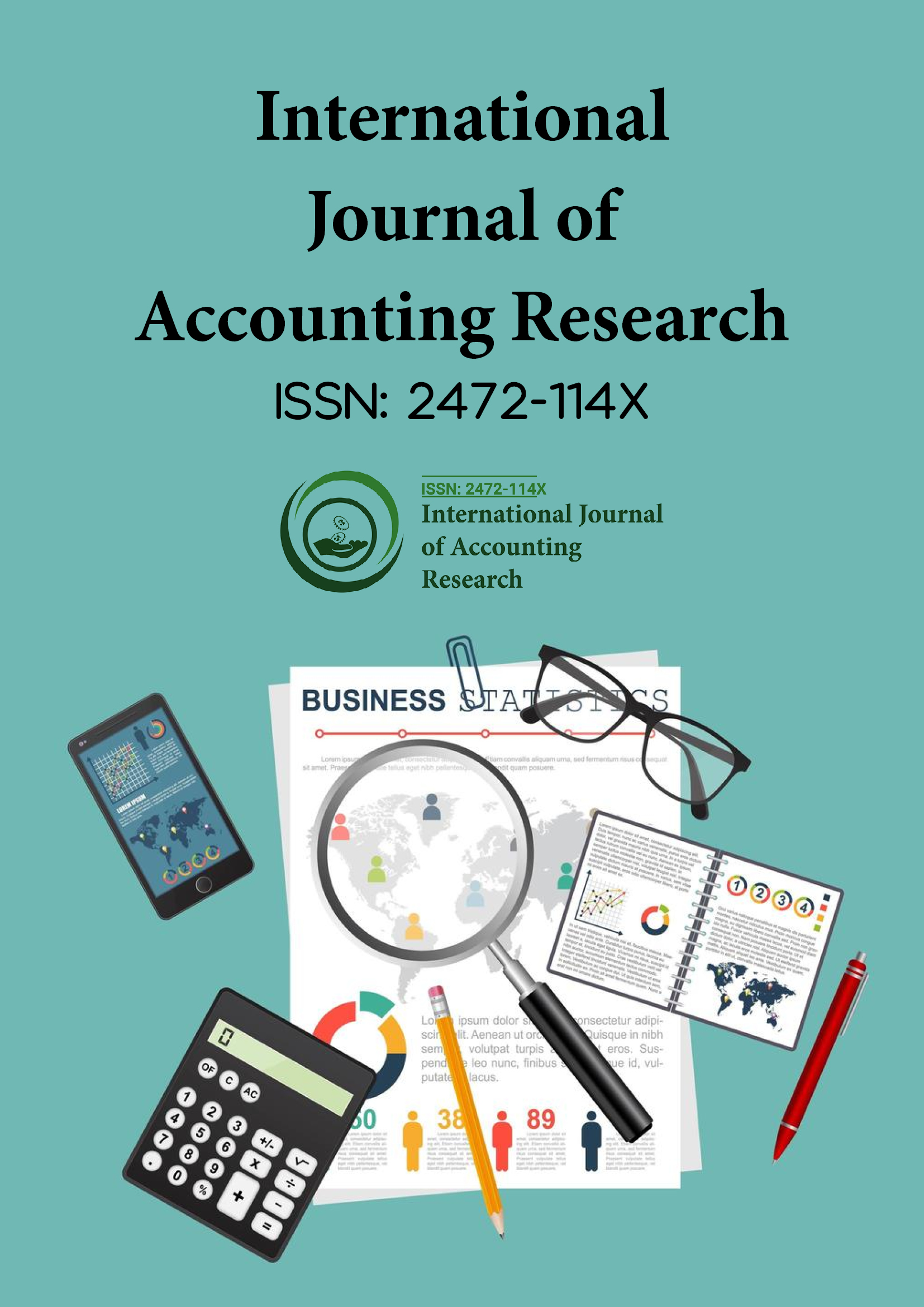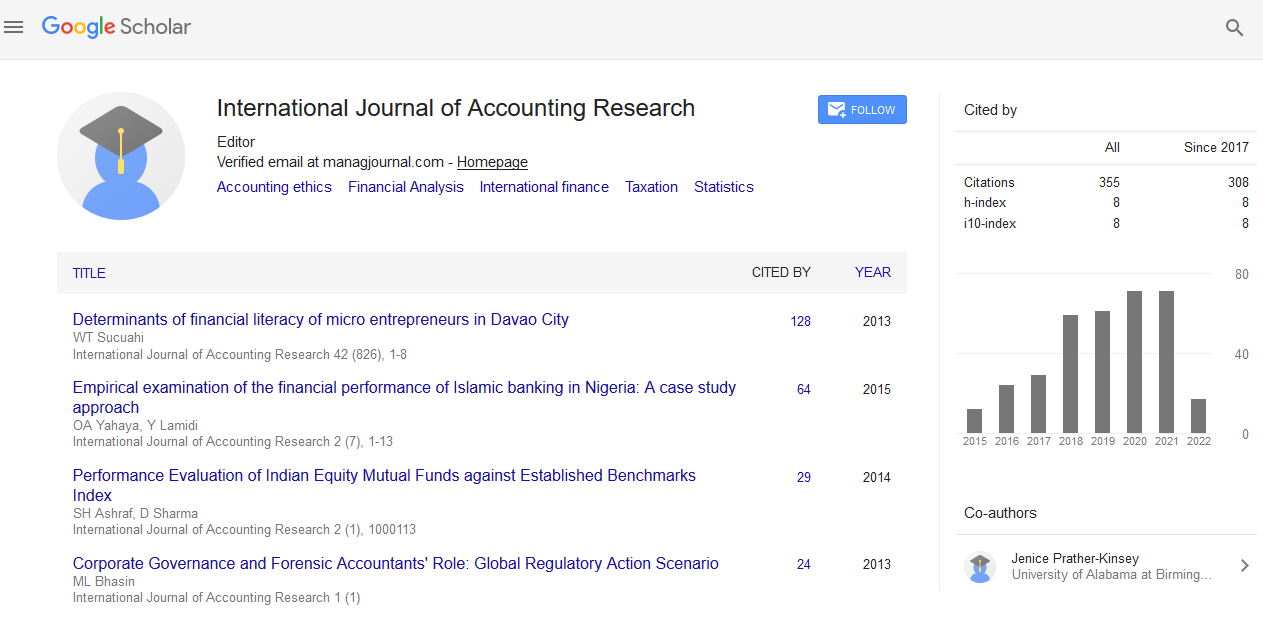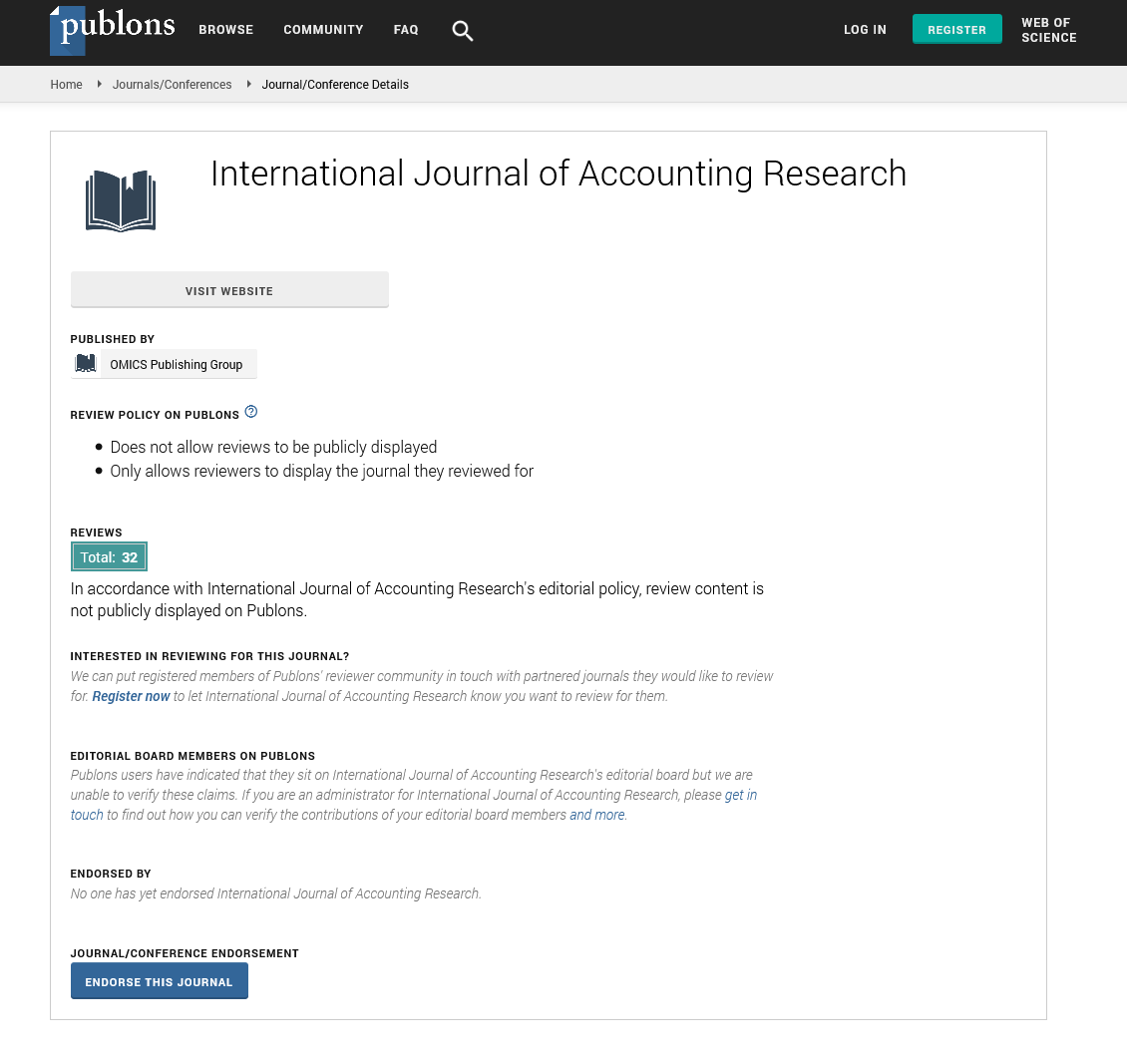Indexed In
- Open J Gate
- RefSeek
- Hamdard University
- EBSCO A-Z
- Scholarsteer
- Publons
- Euro Pub
- Google Scholar
Useful Links
Share This Page
Journal Flyer

Open Access Journals
- Agri and Aquaculture
- Biochemistry
- Bioinformatics & Systems Biology
- Business & Management
- Chemistry
- Clinical Sciences
- Engineering
- Food & Nutrition
- General Science
- Genetics & Molecular Biology
- Immunology & Microbiology
- Medical Sciences
- Neuroscience & Psychology
- Nursing & Health Care
- Pharmaceutical Sciences
Commentary - (2022) Volume 10, Issue 8
Significance of Financial Networks and its Impacts on Insurance
Jing Huang*Received: 05-Aug-2022, Manuscript No. IJAR-22-18001; Editor assigned: 08-Aug-2022, Pre QC No. IJAR-22-18001 (PQ); Reviewed: 26-Aug-2022, QC No. IJAR-22-18001; Revised: 01-Sep-2022, Manuscript No. IJAR-22-18001 (R); Published: 08-Sep-2022, DOI: 10.35248/2472-114X.22.10.288
Description
We carry out a risk analysis of the non-core insurance business of providing financial institutions with protection against investment losses as a result of a shock. An insurer who lives outside the network and evaluates the possibility of selling protection to the financial firms is included in a static structural model made up of a network of firms that cross-hold each other, a financial market made up of numerous primitive assets that are susceptible to a shock, and the financial market. Assume that each company in the network is capable of making logical decisions regarding the amount of protection to buy in order to maximize its portfolio in accordance with the mean-variance principle. As a result, the shock may have an effect on the insurer through the network but indirectly. One anticipates that the network integration and the shock will play an entangled role in the insurance risk given the current empirical and theoretical discoveries about the nature of financial networks. An increase in network integration can either lessen or magnify the impact of the shock on the insurance risk depending on the shock size in one of three mutually exclusive scenarios.
The global financial crisis of 2007–2009 was defined by the demise and impending failure of the enormous insurance company American International Group (AIG) in 2008, as well as Lehman Brothers' bankruptcy. The underlying reasons for the collapse of AIG. The rapid growth of Credit Default Swaps (CDS), the majority of which were written on mortgage-backed securities, together with the explosion in subprime mortgage lending were symptoms of the early stages of the financial crisis. As one of the principal writers of CDS during this time, AIG became increasingly sensitive to rising mortgage default rates. the contribution of AIG and the insurance industry to the financial crisis, coming to the conclusion that the collapse of AIG was due to its non-core business of selling such financial products rather than its core business of providing traditional insurance products. The US Financial Crisis Inquiry Commission stated that AIG's demise was "mostly due to its enormous sales of credit default swaps, which were undertaken without putting up initial collateral, setting aside financial reserves, or hedging its risk."
The insurance risk study of providing financial products to safeguard financial organizations against investment losses due to a shock, where the broad term shock refers to an unforeseen change of exogenous or endogenous economic factors, was conducted in light of the AIG collapse. Such financial products, which we will refer to as protection, fall under the umbrella of non-core insurance business because they are not normal insurance products and have nothing to do with government actions. Among other insurance authorities, the Geneva Association states that non-core insurance activities such trading in derivatives have the potential to have systemic implications for the global economy. This makes a quantitative risk analysis of non-core insurance company absolutely necessary.
In recent years, the financial institutions that support non-core insurance activity have grown increasingly intertwined. Identifying a growing trend of connectivity inside and between the four industries of hedge funds, banks, broker/dealers, and insurance companies. Since insurers not only sell protection to financial firms but also make risky investments in the financial market, the interconnectedness of firms results from their need for diversification but simultaneously creates a channel for the transmission of shocks and the propagation of systemic risk, from which the insurance industry cannot escape. Therefore, the connectivity of financial organizations must be taken into account when conducting a risk analysis of the non-core insurance activity of selling protection.
Create a static structural model with three parts. The first is a network of interconnected financial institutions. Integration, which refers to the degree of exposures of businesses to one another, is one of the crucial components of cross-holdings. To assess how integrated the firms are A related phrase is "financial connection." The second is a financial market where various rudimentary assets are offered to the businesses. Both internal and external shocks are possible. The third is an insurer who operates outside of this network and evaluates the possibility of offering protection to the businesses so they can hedging their shock-related investment losses. Index-based insurance or CDS index contracts may be comparable to the protection. The financial system's need for insurance protection and it makes it much easier to do a thorough study of the financial system's insurance risk.
Three parts make up a static structural model: a network of financial firms that cross-hold each other; a financial market made up of various risky basic assets; and an insurance that evaluates the possibility of making money by offering protection to the firms. Our study reveals that the network integration and the shock play an entangled role in the insurance risk of this non-core business through a quantitative examination of the insurance risk resulting from the sales of the cover. To develop a matrix analytic strategy to investigate the insurance risk's monotonicity with regard to the network integration parameter. The application of the traditional demonstrate the nonnegativity of certain numbers utilizing matrices' sums, products, and inverses forms the basis of this strategy.
Citation: Huang J (2022) Significance of Financial Networks and its Impacts on Insurance. Int J Account Res. 10:288.
Copyright: © 2022 Huang J. This is an open-access article distributed under the terms of the Creative Commons Attribution License, which permits unrestricted use, distribution, and reproduction in any medium, provided the original author and source are credited.


